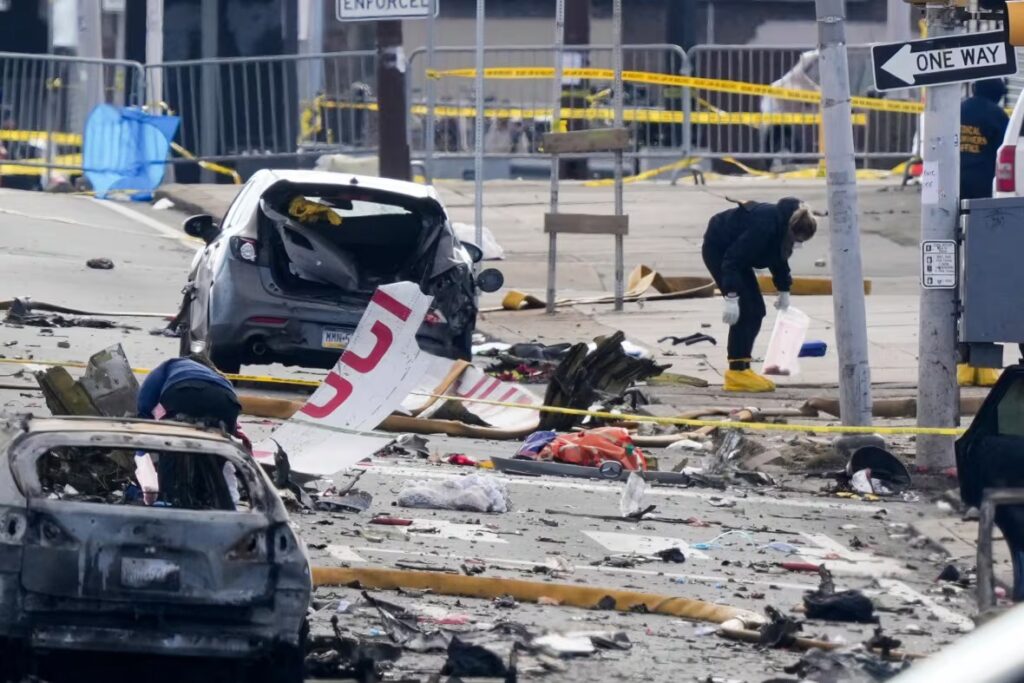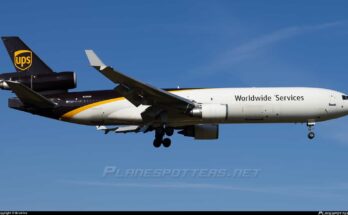
The early hours of a routine air ambulance mission turned into tragedy when a Learjet 55, configured for medical transport, crashed shortly after takeoff from Philadelphia International Airport. The accident, which occurred under still-unfolding circumstances, left investigators piecing together the sequence of events that caused the fatal outcome.
The Aircraft and Its Mission
The Learjet 55 is a mid-sized business jet, often adapted for air ambulance duties due to its speed, range, and cabin size. On the night of the crash, the aircraft was reportedly tasked with a medical transfer flight, although officials have not disclosed whether a patient was onboard at the time. Air ambulance missions are typically high-priority, with crews accustomed to flying under tight timeframes to transport critically ill or injured patients to specialized medical facilities.

The Takeoff Sequence
Witnesses and airport personnel described the jet’s takeoff as initially normal. The aircraft accelerated down the runway, lifted into the night sky, and began its climb. Moments later, however, the jet appeared to falter. Some observers reported hearing an unusual engine noise, while others said the aircraft banked sharply before disappearing from view. Within seconds, the Learjet impacted the ground near the departure path, erupting in flames.
Emergency crews rushed to the scene, but the impact and post-crash fire left little chance of survival. Firefighters battled the blaze as rescuers attempted to reach the wreckage.
Casualties and Emergency Response
Officials confirmed multiple fatalities among the small crew onboard. The identities of the victims have not yet been released pending notification of families, though it is believed the jet carried at least two pilots and possibly medical staff. At this time, it is unclear whether a patient was onboard during the flight.
Philadelphia emergency responders coordinated with airport fire units in containing the wreckage and securing the site. The National Transportation Safety Board (NTSB) dispatched investigators to examine the crash, with a focus on aircraft systems, crew experience, and weather conditions.

Possible Factors
Although the cause of the crash remains under investigation, experts point to several possible factors. Mechanical failure—particularly an engine malfunction—remains a leading theory, given reports of abnormal sounds during takeoff. Human factors, such as crew fatigue or miscommunication, are also being considered, especially since air ambulance flights often operate under urgent and stressful circumstances.
Weather at the time of departure was reported to be relatively stable, with clear skies and light winds, making adverse conditions less likely to have contributed. Investigators will examine flight data recorders, cockpit voice recordings, and maintenance logs to reconstruct the jet’s final moments.
The Broader Impact
The crash underscores the risks inherent in air ambulance operations. While these flights save countless lives, the combination of urgency, night flying, and complex logistics adds layers of danger. The loss of a dedicated medical crew and aviators resonates deeply within both the aviation and healthcare communities.
Air ambulance providers across the country expressed condolences and solidarity, highlighting the bravery of crews who regularly undertake missions in challenging circumstances. For families awaiting word of loved ones, the tragedy brings unimaginable grief, compounded by the fact that the victims were engaged in life-saving work when disaster struck.
Looking Ahead
The NTSB’s investigation will likely take months, with preliminary findings expected within weeks. Lessons from past air ambulance accidents have led to safety improvements, such as stricter pilot training requirements and enhanced maintenance oversight. This latest crash will inevitably prompt further scrutiny of operational practices and safety measures.
For now, Philadelphia mourns the sudden and shocking loss. The Learjet 55, once poised to carry out a mission of mercy, instead became the center of a devastating tragedy.


